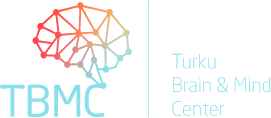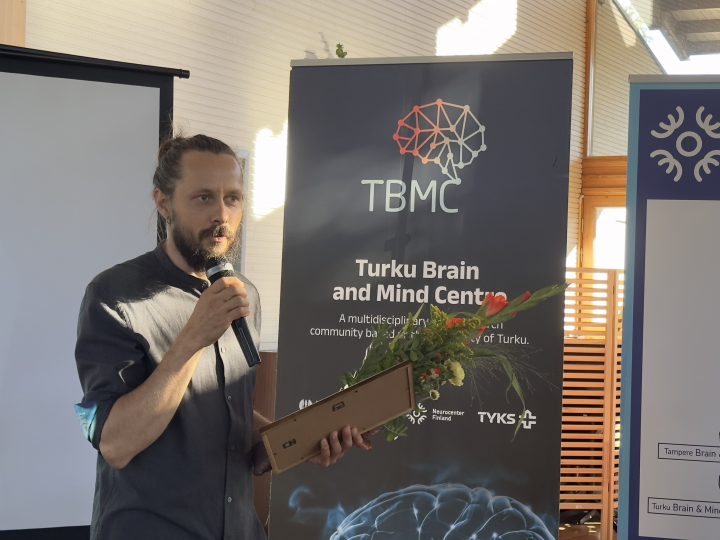A New Research Explores the Connection Between Anesthesia and Consciousness
In a remarkable achievement, Oskari Kantonen, an MD and doctoral researcher at the University of Turku, has been awarded the prestigious Lundbeck Turku Brain and Mind Prize for his research in consciousness studies. His paper, “Decreased Thalamic Activity Is a Correlate for Disconnectedness during Anesthesia with Propofol, Dexmedetomidine, and Sevoflurane But Not S-Ketamine,” represents a significant advancement in understanding the complex interactions between anesthesia and brain function.
Kantonen conducted his research in the Anesthesia Mechanisms Group under the supervision of Associate Professor Harry Scheinin and in collaboration with the Consciousness Research Group under the supervision of Professors Antti Revonsuo and Katja Valli. He wanted to explore how different anesthetic agents affect states of consciousness. The study provides novel insights into how anesthesia influences brain function, offering a deeper understanding of the neural mechanisms differentiating the connected state of consciousness (i.e. when the contents of consciousness are modified by environmental stimuli such as during wakefulness) from disconnectedness (i.e. when there may be internally generated conscious experiences, such as dreams, or an experience of complete void, usually referred to as unconsciousness).
Research Goals and Methodology
The study’s main aim was to deepen the understanding of how anesthesia and different states of consciousness are associated with brain activity. This involves dissecting the different states of consciousness people experience under anesthesia and differentiating them from other unspecific drug-related effects, such as decreased cognitive capacity, drowsiness or amnesia. “We wanted to explore what kind of brain activity specifically differentiates connected and disconnected states of consciousness. To achieve this, we utilized a novel study design where we administered various anesthetics with concentrations designed to render half of the subjects disconnected while keeping the other half in a connected state. Because all subjects within each drug group received the same concentration of the anesthetic agent, we effectively washed out the unspecific drug effects and could focus on the neural mechanisms differentiating between the states of consciousness.”
The research team utilized a variety of anesthetics that are commonly used in operation rooms and intensive care units, including propofol, dexmedetomidine, sevoflurane, and S-ketamine, to manipulate consciousness. They employed advanced neuroimaging techniques such as positron emission tomography (PET) and electroencephalography (EEG) to monitor brain activity.
Key Findings
The main discovery was that when controlling for unspecific drug-related effects, especially decreased midline thalamic metabolism, centered in central medial thalamic nucleus, differentiated the disconnected state from the connected state. Interestingly, this finding was consistent across the propofol, dexmedetomidine and sevoflurane groups, whereas for S-ketamine, they found an increased metabolism in specific brain regions, such as the left intraparietal sulcus differentiating between the states. “This intriguing result with S-ketamine opens new questions about its distinct impact on brain function.”
In addition to the thalamic metabolism, the study found widespread cortical metabolic suppressions when comparing subjects classified as connected or disconnected from the drug groups with the placebo group subjects. This finding suggests that while the cortical changes are likely necessary mechanisms for the alterations in consciousness, they may be insufficient to explain the transitions between the states of consciousness fully.
Future Directions
Looking ahead, the research team plans to delve deeper into the data, exploring functional connectivity and neural complexity across different states. “We’d like to investigate how functional connectivity and complexity in neural activity changes between connected and disconnected states. We are also currently looking into the differences in brain function between the disconnected subjects who reported having dreams experiences and those who haven’t.”
Kantonen is also interested in studying the neural mechanisms of memory in reporting experiences, as amnesia induced by anesthetics could lead subjects to forget their experiences. “Memory plays a crucial role in interpreting and reporting our experiences. Therefore, it could be another interesting aspect to study.”
Collaborative Efforts and Broader Implications
The study is part of Kantonen’s PhD thesis and a larger project investigating the neural mechanisms of anesthesia and consciousness. It involves extensive collaboration with international experts from institutions like the University of California, Irvine, and the University of Michigan in the USA, in addition to the ongoing collaboration with Professor Robert Sanders from the University of Sydney, Australia. Adding to these exciting developments and cooperation, Kantonen remains focused on the scientific journey ahead. “There is still much to explore and more improvements to make. We have more data to preprocess and analyze, and we hope to answer more questions and discover the mysteries of consciousness.”
You can read the full article here.

